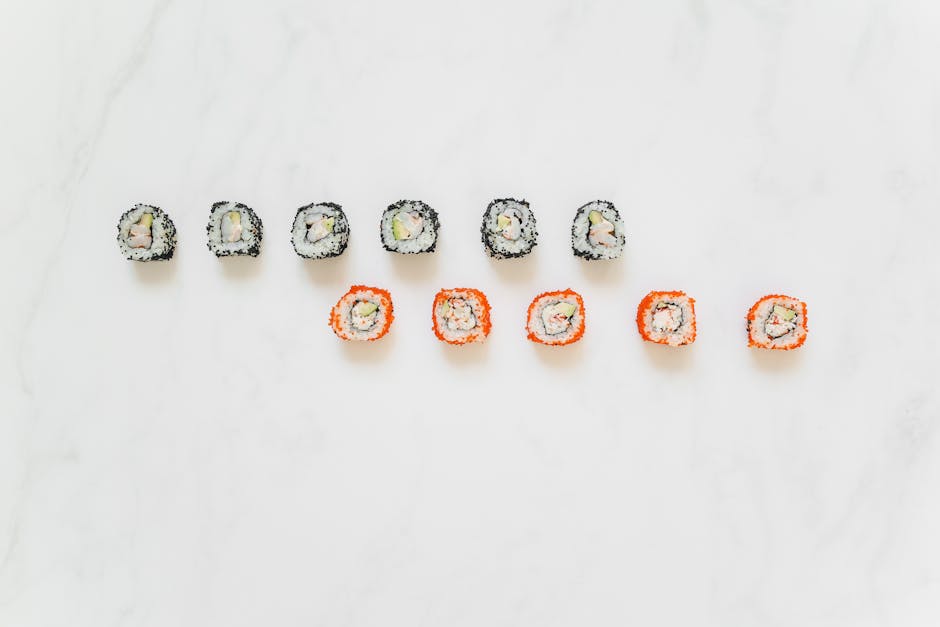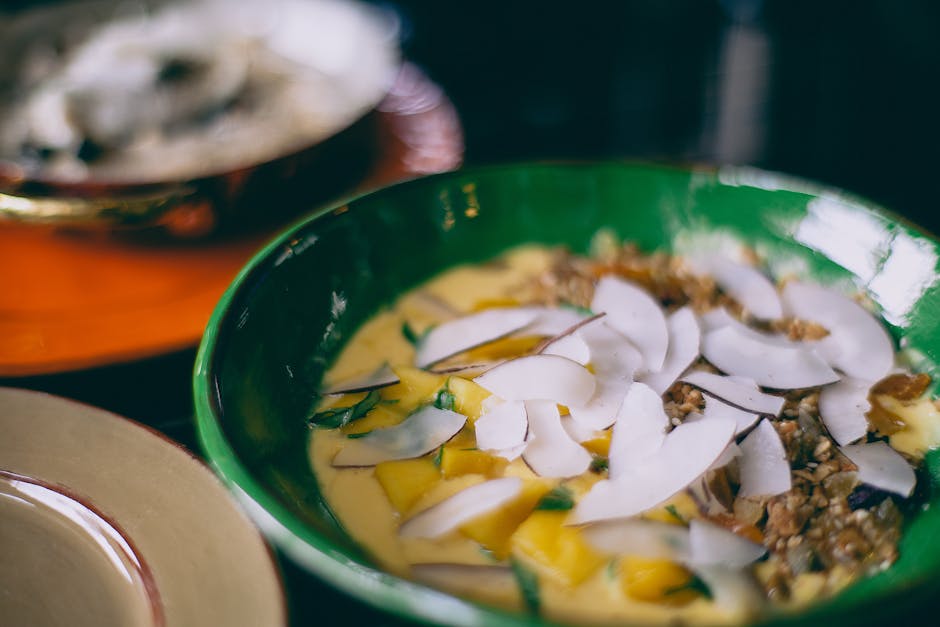Sushi, a culinary cornerstone of Japanese cuisine, boasts a rich history stretching back centuries. While the modern image of perfectly formed rolls filled with raw fish readily springs to mind, its origins are surprisingly humble. Early forms of sushi, dating back to Southeast Asia, involved fermenting rice with fish to preserve it, a technique that spread to Japan around the 8th century. This wasn’t the vibrant, aesthetically pleasing sushi we know today; it was more of a practical method of food preservation, a testament to human ingenuity in the face of limited refrigeration.
The evolution of sushi into the culinary art form it is today took centuries. Over time, the fermentation process was shortened, and vinegar became a key ingredient, adding a distinct tang and flavor profile. By the Edo period (1603-1868), sushi had become a popular street food in Japan, with vendors selling hand-pressed sushi, often incorporating a variety of ingredients beyond fish. This era saw the emergence of nigiri (hand-pressed sushi) and maki (rolled sushi), laying the foundation for the diverse styles we see today.
The global popularity of sushi exploded in the latter half of the 20th century, with sushi restaurants becoming ubiquitous in major cities worldwide. This international appeal led to many adaptations and innovations, including the rise of vegan sushi. Driven by increasing awareness of ethical and environmental concerns, as well as a growing number of vegetarians and vegans, the demand for plant-based alternatives has skyrocketed. In fact, according to a 2023 report by [Insert source if available – e.g., Statista], the global vegan food market is projected to reach [Insert Statistic – e.g., XX billion dollars] by [Insert year – e.g., 2028], showcasing the significant growth in this sector. This surge in popularity has fueled creativity, resulting in incredibly delicious and inventive vegan sushi options that rival their traditional counterparts.
Today, vegan sushi offers a delicious and sustainable alternative, replicating the textures and flavors of classic rolls using innovative ingredients like avocado, marinated tofu, sweet potato, and a variety of colorful vegetables. The cultural significance remains: the art of sushi making, with its emphasis on precision, aesthetics, and the balance of flavors, is preserved, albeit with a modern, compassionate twist. This evolution showcases the adaptability and enduring appeal of sushi, proving that a timeless culinary tradition can embrace new ingredients and philosophies while remaining true to its core values.
Ingredients and Measurements
Creating delicious vegan sushi rolls hinges on using high-quality, fresh ingredients. The following list provides precise measurements for approximately 6-8 sushi rolls, depending on the size. Feel free to adjust quantities based on your needs.
Sushi Rice: 2 cups sushi rice (short-grain Japanese rice is ideal). Important: Rinse the rice thoroughly under cold water until the water runs clear. This removes excess starch and ensures the rice cooks properly and has the right texture. Using a fine-mesh sieve is recommended for this process. After rinsing, soak the rice in cold water for 30 minutes before cooking.
Rice Vinegar: 1/4 cup rice vinegar. Recommendation: Use unseasoned rice vinegar for the best flavor control. You can find this readily available in Asian grocery stores or well-stocked supermarkets.
Sugar: 2 tablespoons granulated sugar. Note: Adjust the sugar according to your preference. Some prefer a slightly sweeter sushi rice, while others prefer a more subtly sweet flavor.
Salt: 1 teaspoon sea salt. Tip: Sea salt provides a more complex and nuanced flavor compared to table salt. However, if you only have table salt, you can still use it successfully.
Nori Seaweed Sheets: 4-6 sheets of dried nori seaweed. Quality Matters: Choose high-quality nori sheets for the best flavor and texture. The sheets should be dark green and have a glossy appearance. Avoid any sheets that appear dull or brittle.
Avocado: 1 ripe avocado, thinly sliced. Ripeness is Key: Choose a ripe avocado that yields to gentle pressure but isn’t overly mushy. This will ensure the avocado slices hold their shape well in the sushi rolls.
Cucumber: 1/2 English cucumber, thinly sliced. Tip: Peeling the cucumber is optional. Leaving the skin on adds a nice textural element and subtle bitterness. Use a mandoline slicer or sharp knife for consistently thin slices.
Carrot: 1/2 medium carrot, peeled and julienned or thinly sliced. Color and Texture: Julienned carrots add a vibrant color and nice crunch to the sushi rolls.
Vegan Cream Cheese (optional): 4-6 tablespoons vegan cream cheese. Variety is Key: There are many excellent vegan cream cheese options available. Choose one that has a texture and flavor profile you enjoy. Ensure that it’s firm enough to hold its shape.
Mango (optional): 1/2 ripe mango, thinly sliced. Sweetness and Flavor: Mango adds a touch of sweetness and vibrant color to your sushi rolls.
Sesame Seeds (optional): 1 tablespoon sesame seeds (black or white). Garnish & Texture: Sprinkling sesame seeds on top adds a delightful crunch and visual appeal to the finished rolls.
Water: Amount will depend on the rice cooking instructions. Follow the instructions on your rice packaging for the best results.
Important Note: All measurements are approximate. Adjust the quantities based on your preference and the number of sushi rolls you wish to make. Ensure all your ingredients are fresh and of high quality for the best possible taste and texture.
Sushi Rice Preparation
Preparing sushi rice correctly is paramount to achieving the perfect vegan sushi roll. The rice needs to be sticky, yet not mushy, providing the ideal texture for holding the filling and shaping the rolls. This section details the process, emphasizing key steps for success.
Start with the right rice: Use Japanese short-grain sushi rice. Other types of rice won’t have the necessary starch content to achieve the desired stickiness. You’ll need approximately 2 cups (300g) of sushi rice for a standard batch, enough for several rolls.
Rinse the rice thoroughly: This step is crucial for removing excess starch. Place the rice in a fine-mesh sieve and rinse under cold running water until the water runs almost clear. This usually takes about 5-7 minutes. Don’t skip this step! Excess starch can make the rice too sticky and gummy.
Combine rice and water: In a medium saucepan, combine the rinsed rice with 2 1/4 cups (530ml) of water. The ratio of water to rice is important for achieving the correct consistency. Use a non-stick saucepan to prevent sticking and burning.
Bring the rice to a boil: Bring the rice and water mixture to a rolling boil over high heat. Once boiling, immediately reduce the heat to the lowest setting, cover the pot tightly with a lid, and simmer for 15 minutes. Do not lift the lid during this time. This allows the steam to cook the rice evenly.
Rest the rice: After 15 minutes, remove the pot from the heat and let the rice steam, covered, for another 10 minutes. This allows the rice to absorb the remaining moisture and become perfectly sticky. Resist the urge to open the lid prematurely.
Season the rice: Once the resting period is complete, gently fluff the rice with a rice paddle or wooden spoon. Do this carefully to avoid breaking the grains. In a separate bowl, whisk together 1/4 cup (50ml) of rice vinegar, 2 tablespoons (30g) of sugar, and 1 tablespoon (15ml) of salt. Pour this mixture over the warm rice, and gently fold it in using a cutting motion. Be gentle! Over-mixing will make the rice mushy.
Cool the rice: Spread the seasoned rice onto a large, flat, non-stick surface, like a baking sheet, to cool quickly. Use a rice paddle to spread it thinly and prevent clumping. This helps to prevent the rice from becoming overly sticky. Once cooled to room temperature, it’s ready to use for making your vegan sushi rolls. Allowing the rice to cool completely is essential for easier handling and preventing the nori from becoming soggy.
Important Note: The success of your sushi rice depends heavily on the type of rice, the water-to-rice ratio, and the cooking time. Don’t be afraid to experiment slightly with the water amount depending on your stove and the specific type of rice you use. Practice makes perfect!
Vegetable and Avocado Preparation
Proper preparation of your vegetables and avocado is crucial for creating delicious and visually appealing vegan sushi rolls. This section details the best techniques for achieving optimal texture and flavor.
Avocado Preparation: Start with ripe, but firm avocados. Avoid avocados that are overly soft or bruised, as they will be mushy and difficult to work with. For a standard 6-8 piece sushi roll, you’ll need approximately one medium-sized avocado. Cut the avocado in half lengthwise, remove the pit, and scoop out the flesh using a spoon. Avoid using a knife as much as possible to prevent browning.
Slicing the Avocado: Once the avocado is scooped, slice it thinly and lengthwise. Aim for slices that are about ⅛ inch thick. This ensures they are easy to handle and won’t overpower the other ingredients in your roll. To prevent browning, immediately place the sliced avocado in a bowl of cold water with a squeeze of lemon or lime juice. This will help preserve its vibrant green color and prevent oxidation. Remove the avocado slices from the water just before assembling your sushi.
Cucumber Preparation: Cucumber is a classic sushi ingredient, adding a refreshing crunch. For a 6-8 piece roll, you’ll need about ½ a medium-sized cucumber. Wash the cucumber thoroughly and remove the skin using a vegetable peeler. This step is optional, depending on your preference, but removing the skin provides a smoother, more delicate texture. Then, slice the cucumber lengthwise into thin strips, approximately ⅛ inch thick, similar to the avocado. Pat the cucumber slices dry with a paper towel to remove excess moisture, which can make the rice soggy.
Carrot Preparation: Carrots add a touch of sweetness and vibrant color. Use about ¼ cup of peeled and julienned carrots for a 6-8 piece roll. Peel the carrots and use a vegetable peeler or mandoline slicer to create thin, matchstick-like juliennes. These should be approximately ⅛ inch thick and 2-3 inches long. If using a mandoline, exercise caution to avoid injury. You can blanch the carrots for a few seconds in boiling water to soften them slightly, but this is optional. Pat them dry before using.
Other Vegetables: The possibilities are endless! Consider adding other vegetables like bell peppers (thinly sliced), shiitake mushrooms (sautéed and slightly cooled), or asparagus (blanched and cut into 2-inch pieces). Remember to always wash and thoroughly dry all vegetables before use. Adjust the quantity of each vegetable based on your preference and the size of your sushi roll.
Professional Recommendation: For best results, use very sharp knives to ensure clean, even cuts. A sharp knife will also prevent bruising the vegetables, preserving their texture and appearance. Prepare all your vegetables ahead of time and keep them chilled until ready to assemble your sushi rolls. This will help maintain their freshness and crispness.
Vegan Filling Preparation (e.g., Tofu Scramble, Marinated Mushrooms)
Creating delicious vegan sushi fillings requires careful preparation to achieve the right texture and flavor. Here are two popular options: a tofu scramble and marinated mushrooms, both perfect for adding substance and savory depth to your vegan sushi rolls.
Tofu Scramble Filling: This versatile filling offers a familiar, satisfying texture reminiscent of scrambled eggs. For a batch sufficient for several rolls, start with one block (14 oz) of extra-firm tofu, pressed to remove excess water. Crumble the tofu into a medium bowl. Heat 1 tablespoon of olive oil in a non-stick pan over medium heat. Add the crumbled tofu and cook, stirring frequently, for about 5-7 minutes, until lightly browned. Avoid overcrowding the pan; work in batches if necessary to ensure even browning.
Now, let’s build the flavor profile. Add 1/4 cup finely chopped onion and 1/4 cup finely chopped bell pepper (any color) to the pan. Cook for another 3-5 minutes, until softened. Season generously with 1/2 teaspoon turmeric for color and a hint of earthy flavor, 1/4 teaspoon garlic powder, 1/4 teaspoon onion powder, a pinch of black salt (kala namak) for an eggy flavor, and salt and pepper to taste. Black salt is crucial for achieving that authentic eggy taste in vegan dishes. If you prefer a spicier kick, add a pinch of red pepper flakes.
Once the tofu scramble is cooked through and the vegetables are tender, remove it from the heat and let it cool completely before incorporating it into your sushi rolls. Cooling is essential; warm fillings will make the rice soggy.
Marinated Mushroom Filling: Marinated mushrooms provide a delightful umami punch and a satisfyingly chewy texture. For this recipe, use 8 ounces of your favorite mushrooms – shiitake, cremini, or a mix work well. Slice the mushrooms thinly. In a bowl, whisk together 2 tablespoons of soy sauce (or tamari for gluten-free), 1 tablespoon of rice vinegar, 1 tablespoon of mirin (sweet rice wine), 1 teaspoon of sesame oil, and 1/2 teaspoon of grated ginger. Adjust the amount of soy sauce and mirin to taste; you may prefer a sweeter or saltier marinade.
Add the sliced mushrooms to the marinade and toss to coat evenly. Let them marinate for at least 30 minutes, or preferably longer, in the refrigerator. The longer they marinate, the more flavorful they become. Before using in your sushi rolls, drain the mushrooms well, reserving the marinade for another use if desired (e.g., a dipping sauce). Excess liquid will make your sushi rolls soggy.
Important Note: Regardless of your chosen filling, ensure it’s thoroughly drained before adding it to your sushi rolls. Excess moisture can compromise the structural integrity of the rolls and lead to a less enjoyable eating experience. Experiment with different herbs and spices to personalize your fillings and create unique flavor combinations!
Nori Sheet and Rolling Mat Setup
Before you begin crafting your delicious vegan sushi rolls, proper preparation of your nori sheet and rolling mat is crucial for achieving perfectly formed and aesthetically pleasing results. This section will guide you through the process, ensuring you’re ready to roll like a pro.
First, gather your materials. You’ll need a standard-sized sheet of nori seaweed (approximately 7.87 inches x 7.87 inches or 20cm x 20cm), and a bamboo rolling mat (also known as a makisu). Ensure your nori sheet is dry and crisp; damp nori will be difficult to work with and may tear. If your nori is stored in a humid environment, you may want to briefly place it in a dry area for a few minutes before use to ensure optimal crispness.
Next, prepare your rolling mat. Lay the bamboo mat flat on a clean, dry surface. Some people find it helpful to lightly dampen a clean kitchen towel and place it on top of the rolling mat before starting. This helps prevent the rice from sticking and makes for easier cleanup. However, this step is entirely optional and many sushi chefs work directly on the dry mat. Experiment to find what works best for you.
Now, carefully place the nori sheet on the rolling mat. Orient the nori sheet so that the shiny side is facing down. The shiny side is generally smoother and provides a better base for the rice. If you’re unsure which side is which, the dull side is often slightly more textured. Some nori sheets even have a slight indentation or marking to indicate the side to face down. Take a moment to inspect your nori sheet.
The placement of the nori on the mat is important for efficient rolling. Position the nori sheet centrally on the mat, leaving approximately one inch of mat exposed on each side. This extra space will be essential for gripping the mat and rolling the sushi tightly. Don’t worry if it’s not perfectly centered; slight adjustments can be made during the rolling process.
Avoid touching the nori sheet directly with your bare hands as much as possible. The oils from your hands can affect the nori’s texture and make it harder to work with. If you must adjust the placement of the nori, use a clean, damp cloth or spatula.
With your nori sheet neatly positioned on the mat, you are now ready to start adding your vegan sushi rice and fillings. Remember to keep a bowl of water nearby to lightly moisten your hands, preventing the sticky rice from adhering excessively to your fingers. This will make the entire process much smoother and more enjoyable. Following these steps will ensure perfectly formed and delicious vegan sushi rolls every time.
Sushi Roll Assembly
Assembling vegan sushi rolls requires precision and a gentle touch. The key is to maintain a consistent tightness without over-compressing the rice, which can lead to a less enjoyable texture. We’ll guide you through the process step-by-step, ensuring you create beautiful and delicious rolls every time.
Prepare your workstation: Before you begin, ensure you have a bamboo rolling mat (makisu) readily available. Lightly dampen a kitchen towel and place it over the mat to prevent the rice from sticking. Have a small bowl of water nearby for wetting your hands – this prevents the rice from sticking to them. Also, keep a clean, damp cloth handy to wipe your hands and the mat as needed.
Laying the foundation: Take a sheet of nori seaweed (about 8×8 inches) and place it shiny-side down on the bamboo mat. Ensure the nori is completely flat to avoid uneven rolls. Using your damp hands, spread a thin and even layer of sushi rice (approximately 1 ½ cups of cooked sushi rice for a standard roll) over the nori, leaving about ½ inch of space at the top edge. Avoid pressing too hard; you want a smooth, even layer, not a compacted one.
Adding the fillings: Now comes the creative part! Arrange your vegan fillings across the center of the rice, keeping them about 1-2 inches from the bottom edge. Don’t overcrowd the roll; too many fillings will make it difficult to roll and may cause it to break. A good rule of thumb is to use fillings that amount to about 1/3 to 1/2 cup in total volume. Consider the texture and size of your fillings – larger pieces might need to be cut smaller for easier rolling.
Rolling the sushi: Using the bamboo mat, gently lift the bottom edge of the nori over the fillings. Tuck in the fillings tightly, using your thumbs to gently guide and press the rice and nori together. Continue rolling tightly and evenly, using the mat to help create a firm, cylindrical shape. Maintain a consistent pressure throughout the rolling process. Once you reach the end, gently press the seam to secure the roll. Dampen the top edge of the nori with a little water to help it adhere.
Finishing touches: Carefully remove the roll from the bamboo mat. Using a sharp, wet knife, cut the roll into 6-8 equal pieces. Wipe the knife clean between each cut to prevent the rice from sticking. Arrange your beautifully crafted vegan sushi rolls on a plate, garnish as desired (sesame seeds, microgreens), and serve immediately for the best flavor and texture. Remember that practice makes perfect! Don’t be discouraged if your first few attempts aren’t picture-perfect. With a little patience and practice, you’ll be creating stunning vegan sushi rolls in no time.
Professional Recommendation: Invest in a good quality bamboo rolling mat. A well-made mat makes a significant difference in the ease and success of rolling your sushi. Also, experiment with different fillings to find your favorite combinations! The possibilities are endless.
Best Vegan Sushi Rolls: Recommendations
Our Best Vegan Sushi Rolls selection offers a delightful and healthy culinary experience. We recommend enjoying these rolls fresh for the optimal flavor and texture. For best results, consume within 2 hours of preparation. If you need to store them, tightly wrap the sushi in plastic wrap and refrigerate. They will remain palatable for up to 24 hours, although the texture might slightly change.
Serving Suggestions: These vegan sushi rolls are incredibly versatile and can be served in a variety of ways. For a casual setting, simply arrange the rolls on a platter and serve with a selection of dipping sauces. We particularly recommend our house-made spicy mayo (vegan, of course!), a tangy ponzu sauce, or a classic soy sauce. For a more elegant presentation, consider plating individual rolls on small, decorative plates. Garnish with finely shredded daikon radish, sesame seeds, or a sprinkle of microgreens for an added touch of visual appeal.
Complementary Dishes: To enhance your sushi experience, consider pairing the rolls with some complementary dishes. A refreshing miso soup (ensure it’s vegan-friendly) is a classic choice, providing a warm and savory contrast to the coolness of the sushi. A light and zesty salad with a ginger-sesame dressing would also be a delicious accompaniment. For a heartier meal, consider serving edamame, vegetable tempura (ensure it’s prepared with vegan batter), or a selection of vegan gyoza. These dishes will create a balanced and satisfying meal.
Nutritional Information (per roll, approximate values may vary based on specific ingredients and preparation):
- Calories: Approximately 250-350 calories per roll. This will vary significantly depending on the filling and size of the roll.
- Protein: 10-15 grams, primarily from tofu, tempeh, or edamame.
- Carbohydrates: 30-40 grams, mainly from rice and avocado.
- Fat: 10-15 grams, depending on the inclusion of avocado and other fatty ingredients.
- Fiber: 3-5 grams, contributing to digestive health.
- Sodium: Variable; check the soy sauce and other condiments used.
- Vitamins & Minerals: Rich in various vitamins and minerals depending on the filling, including Vitamin C (from avocado and vegetables), Vitamin K (from seaweed), and various B vitamins.
Important Note: While we strive for accuracy, nutritional information is an estimate. Always check the specific ingredients and preparation methods for precise nutritional details. For individuals with allergies or dietary restrictions, please carefully review the ingredient list before consumption. We are happy to accommodate specific dietary needs with advance notice.
Enjoy your delicious and healthy vegan sushi rolls!





